|
|
 |
|
October 26, 2007
In Celebration of Victor Ries' 100th Birthday ...
Here's the story of how he shaped the future of the
Jewish-American Hall of Fame medals project
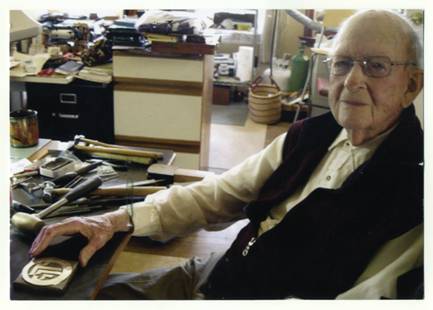
Victor Ries has continued to create works of art as he approached his 100th birthday. The Jewish HeritageMuseum at the Reutlinger Community for Jewish Living presented “A Life of Creativity: The Metalwork of Victor Ries, from October 7, 2007 through January 6, 2008.
When plans were made to launch the Jewish-American Hall of Fame medal project in 1968, Victor Ries, who was artist-in-residence at the Magnes Museum in Berkeley, California, was asked to submit design ideas. The first honoree was, appropriately, Rabbi Judah L. Magnes, who was born and raised in the San Franciso Bay area, and who capped a distinguished career in Jewish communal life by serving as the first President of the Hebrew University in Jerusalem.

Entrance gate to the MagnesMuseum, designed by Victor Ries while he was artist-in-residence.
Victor Ries was born in Germany on October 26, 1907. He learned silversmithing, but left in 1933, when Hitler came to power. Victor went to Palestine, where his first job was at Friedlander, the only metal factory in Tel Aviv. In 1935, the Bezalel School of Design opened, and he was hired to teach jewelry and metalsmithing. In addition, Victor had his own workshop and executed many orders for large decorative work in Haifa and Jerusalem, in association with famed architect Erich Mendelsohn. After immigrating to the United States, Victor again did some work together with Mendelsohn, and later did many designs for churches and synagogues in the San Francisco Bay area.

Ark designed by Ries, in Temple Rodef Shalom, San Rafael.
Victor Ries surprised Mel Wacks, founder of the Jewish-American Hall of Fame, when he submitted proposed designs for the Judah L. Magnes medal that were not round! Victor had used similar shapes before – for Gleeson Library Associates, University of San Francisco. The design of the Library of the Hebrew University and the Shrine of the Book (containing the Dead Sea Scrolls), complemented by the unique tapezoidal shape convinced Jewish-American Hall of Fame founder Mel Wacks to adopt the shape for this and future medals in the series.
 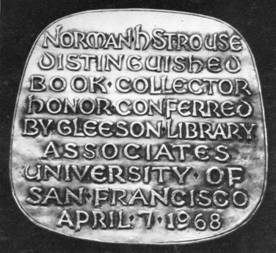
1968 medallic plaques by Victor Ries.
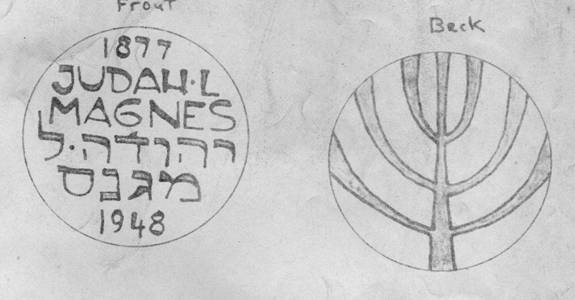
 
Preliminary sketches for round and trapezoidal shapes for Judah L. Magnes medal.
Victor Ries used an unusual technique to create the original large models for the Judah L. Magnes medal. Whereas most medalists prepare their models from clay, which is cast in plaster-of-paris, Victor prepared the models in a similar manner as his large architectural sculptures – by cutting and assembling pieces of metal and other materials. You can see how he hammered the wall surrounding the Shrine of the Book, to give it texture.
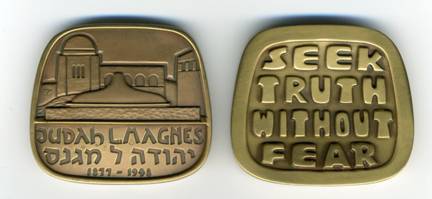
The Judah L. Magnes medal by Victor Ries.
The total mintages for Ries’ Judah L. Magnes medal are: 585 bronze and 265 pure silver. In 1985, Mel Wacks presented a medal to the Hebrew University for display in Judah L. Magnes’ old office at the top of the library building that is pictured on the medal.
Jewish-American Hall of Fame medals have been issued every year since 1969 – with all but three produced in the trapezoidal shape innovated by Victor Ries. Wacks gives much of the credit for the success of the Jewish-American Hall of Fame medals (it is now the longest continuing series of art medals being issued in the United States!) to the shape created by Victor Ries.
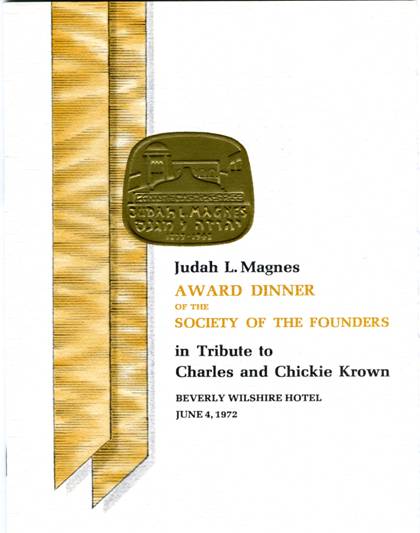
For many years, the Society of the Founders, American Friends of the Hebrew University presented the Magnes Award to major benefactors
|